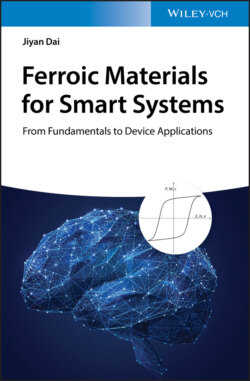Читать книгу Ferroic Materials for Smart Systems - Jiyan Dai - Страница 9
1 General Introduction: Smart Materials, Sensors, and Actuators
ОглавлениеThe early twenty‐first century has foreseen acceleration of innovations in robotics and automations as well as artificial intelligence (AI), where sensors/transducers and smart materials play very important roles. The concept of AI has been around since the late 1950s; however, it's only since the first decade of the twenty‐first century that excitement about it has really begun to grow due to the ability of fast computation and abundant size of memory devices. A very successful demonstration of AI is Google's AlphaGo, which is the first computer program to defeat a professional human Go player (see Figure 1.1). Another successful application of AI is the unmanned vehicles and aircrafts where large number of sensors and actuators are used.
Figure 1.1 AI beats human chess player.
One may ask, what is the relation between the key word “ferroic materials” of this book and the mentioned robotics, automations, and AI? The answer is that these smart and intelligence systems rely on large amount of data from sensors and memories for machine learning and actuators for close‐looped feedback control systems; and among these sensors, actuators, and memories, ferroic materials play very important roles.
For example, the piezoelectric property of a ferroelectric material (one of the most typical ferroic materials) can be used for ultrasound sensors to detect distance of your car from a wall for auto parking system. A ferroelectric material can be used as the functional element for many kinds of sensors from pressure sensor to acceleration sensor, infrared sensor, etc. Beyond that, a ferroelectric polarization and its switching can also be used in memory devices such as ferroelectric random‐access memory (FeRAM) where the ferroelectric layer acts as gate insulator in a field‐effect transistor (FET) structure. Ferroelectric tunneling‐based resistive random‐access memory (RRAM) has also been demonstrated, and such ferroelectric‐based memory has been shown to be able to perform as an artificial synapse. More interestingly, artificial neural networks (ANNs) based on these ferroic synapses can realize brain‐like computing and AI functions such as image recognition. As shown in Figure 1.2, synapses with BiFeO3 (BFO) ferroelectric layer has been successfully demonstrated.
Figure 1.2 A cross‐bar structure of synapse and artificial neuron networks based on a cross‐bar structure. Ferroelectric thin films such as BiFeO3 can be used as the junction material.
Source: Adapted from Boyn et al. (2017).
This book will tell you fundamentals and characterization methods of ferroic materials, physics, and technologies behind ferroic device design and applications as well as their recent advances.
